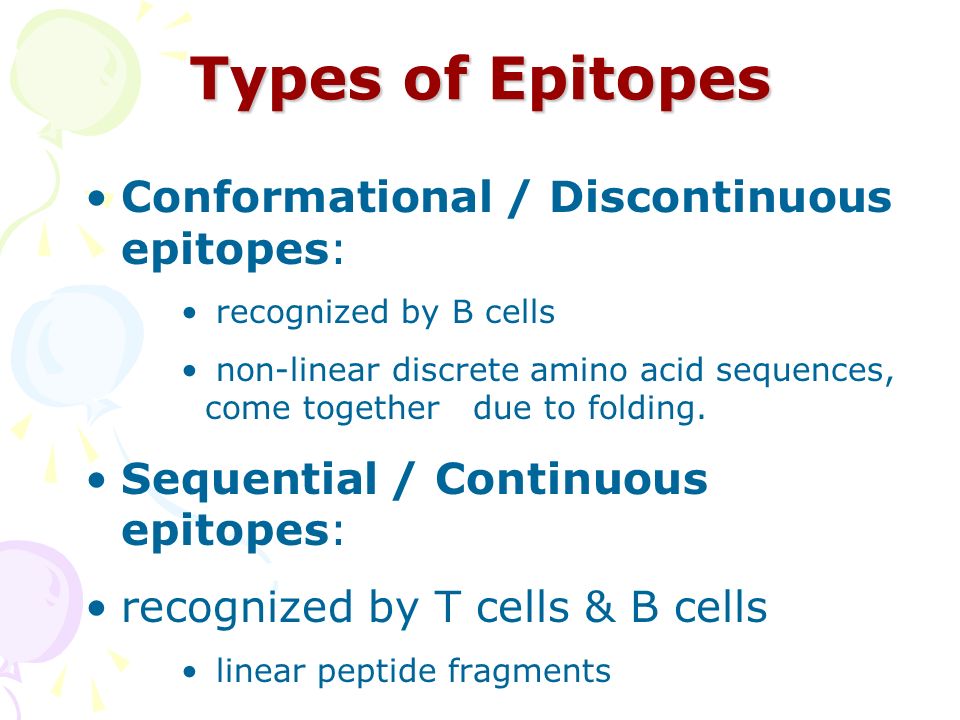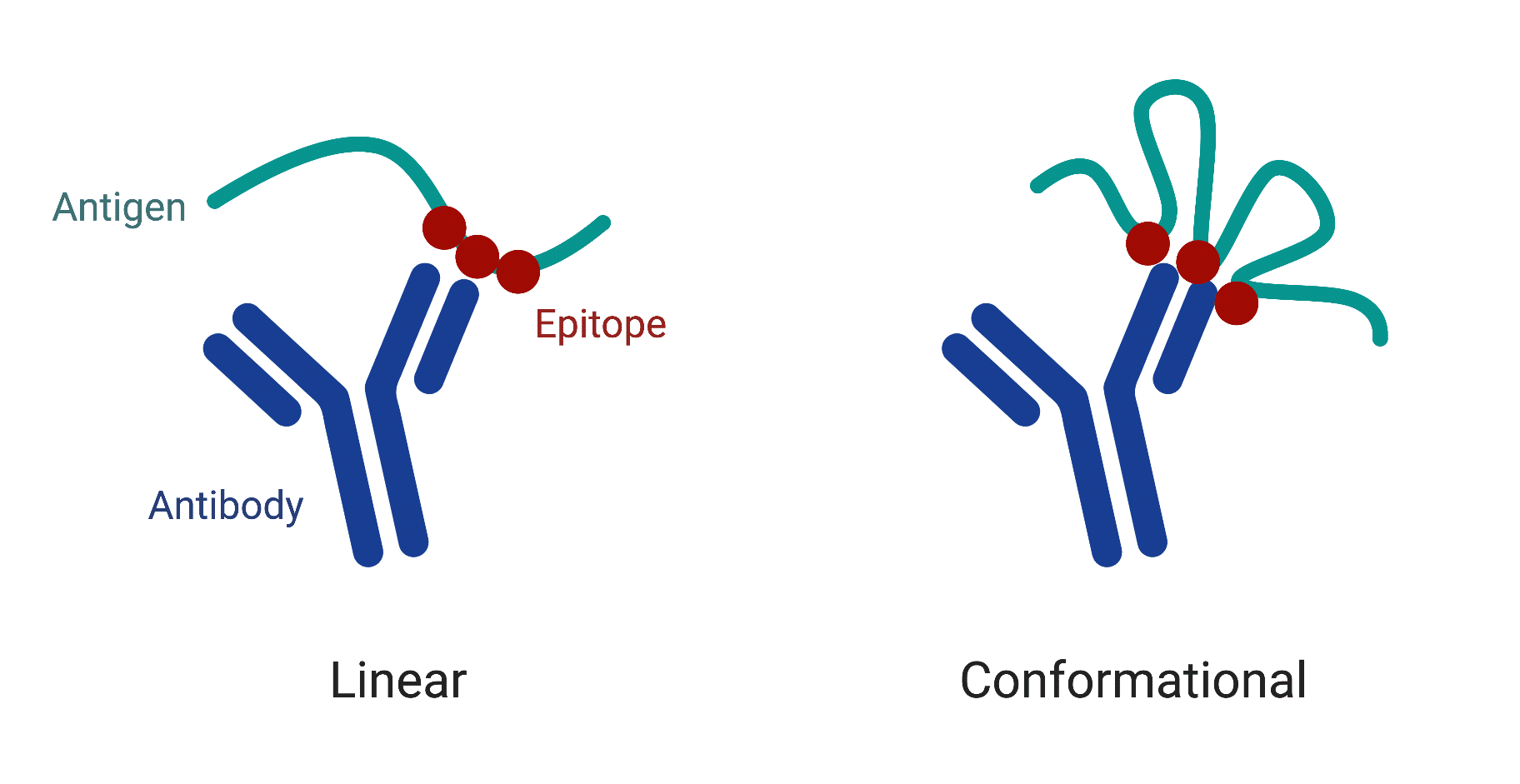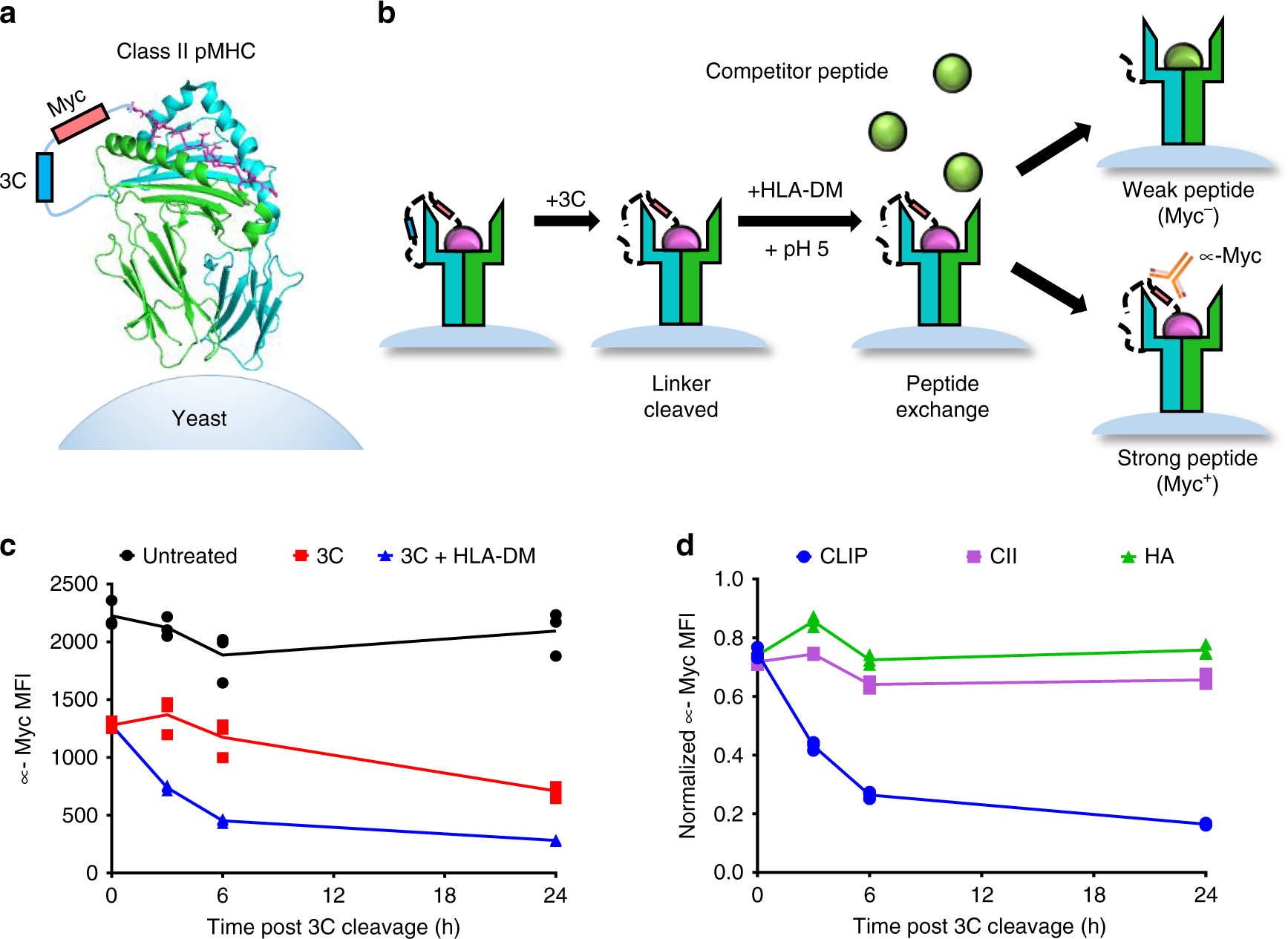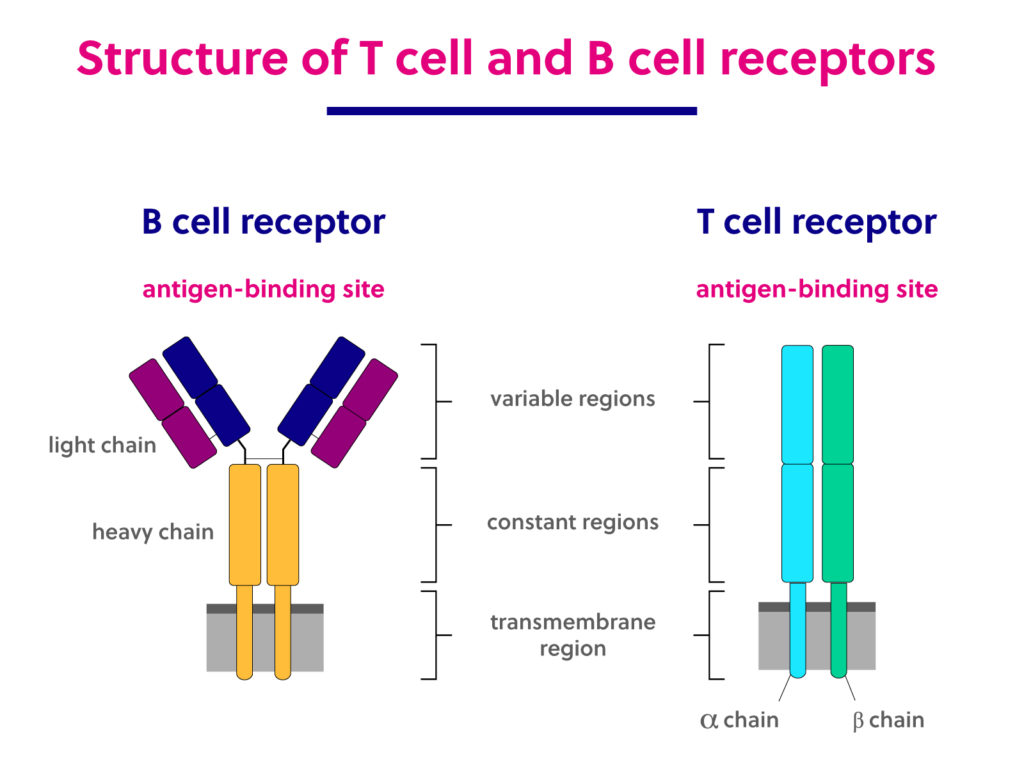A Guide to the IEDB Immune Epitopes
Welcome to your pre-lab guide for exploring the Immune Epitope Database (IEDB)! This guide will walk you through some fundamental concepts in immunology and introduce you to the IEDB, a powerful tool for studying immune responses. Understanding these basics will help you interpret the data you’ll encounter in your lab session, particularly concerning pathogens like SARS-CoV-2.
1. Introduction: The Immune System’s Recognition Machinery
Our immune system is a complex defense network. A key part of this system is its ability to recognize specific parts of foreign invaders, like viruses or bacteria.
- Antigens: These are molecules (often proteins) from a pathogen or foreign substance that can trigger an immune response. Think of an antigen as the entire “identity card” of an invader.
- Immune Receptors: Specialized proteins on your immune cells (like B cells and T cells) or secreted by them (like antibodies) act like “scanners.” They don’t look at the whole antigen “identity card” at once, but rather at specific, small features on it.

Analogy: Imagine an antigen as a complex enemy aircraft. Your immune system’s radar (immune receptors) doesn’t just detect “aircraft”; it locks onto specific parts, like a unique emblem on the wing or the shape of its tail. These specific parts are called epitopes.
2. What is the IEDB? Your Gateway to Immune Information
The Immune Epitope Database (IEDB) (available at www.iedb.org) is a freely available, comprehensive scientific database. It catalogs experimental data on epitopes – the specific parts of antigens that are recognized by the immune system.
Think of the IEDB as a massive, meticulously organized library. Instead of books, it stores:
- Information on specific epitopes (their sequences, structures).
- Details about which antigens they come from (e.g., which protein from which virus).
- How immune cells (like B cells and T cells) and antibodies recognize these epitopes.
- The context of this recognition (e.g., in which host, after what kind of exposure or immunization).
- References to the scientific publications where this information was reported, often with direct links to detailed curated data from those papers.
Researchers in immunology, vaccine development, and infectious disease use the IEDB to find existing knowledge, analyze trends, and design new experiments.
In your lab, you’ll be looking at search results from the IEDB, specifically for epitopes from the SARS-CoV-2 virus.
3. What is an Epitope? The Molecular “Handshake”
An epitope (also known as an antigenic determinant) is the precise region of an antigen that is recognized by an immune receptor, such as an antibody, B-cell receptor, or T-cell receptor.
Epitopes can be:
- Linear Epitopes: A continuous stretch of amino acids in a protein (or nucleotides in DNA/RNA). Imagine a single word in a sentence. The IEDB often shows these as a sequence of letters (e.g.,
LSRLDkveaevqiDR). - Discontinuous (or Conformational) Epitopes: Formed by amino acids that are not in a continuous sequence but are brought together in the protein’s 3D folded structure. Imagine several words from different parts of a paragraph that together form a key phrase when the paragraph is structured correctly.
- Non-Peptidic Epitopes: Some immune responses target molecules other than proteins, like carbohydrates or lipids found on pathogens.
The “Filter Options” panel seen on the left side of the IEDB search results allows you to filter for these different types of epitopes.



4. Key Immunological Concepts for IEDB Data
To make sense of the IEDB results, you need to know a few more immunological terms:
4.1. Immune Cells & Responses
- B Cells: A type of white blood cell. When activated, B cells can differentiate into plasma cells that produce antibodies. Antibodies can bind to epitopes on pathogens, neutralizing them or marking them for destruction. B cell epitopes are often on the surface of antigens.
- T Cells: Another type of white blood cell crucial for immunity. There are several types:
- Helper T Cells (CD4+ T cells): They “help” orchestrate the immune response by activating other immune cells. They recognize epitopes presented on MHC Class II molecules.
- Cytotoxic T Cells (CD8+ T cells): They can directly kill infected host cells (e.g., cells infected with a virus). They recognize epitopes presented on MHC Class I molecules.
4.2. MHC (Major Histocompatibility Complex) Molecules
MHC molecules are proteins on the surface of your body’s cells that “present” peptide epitopes to T cells. Think of them as display platforms.
- MHC Class I: Found on almost all nucleated cells. They display epitopes from proteins made inside the cell (e.g., viral proteins if the cell is infected). This tells CD8+ T cells, “This cell is infected, destroy it!”
- MHC Class II: Found mainly on specialized Antigen-Presenting Cells (APCs) like macrophages, dendritic cells, and B cells. They display epitopes from pathogens that have been engulfed and broken down by the APC. This tells CD4+ T cells, “There’s an invader, help coordinate a response!”


- MHC Restriction / HLA: In humans, MHC molecules are also called Human Leukocyte Antigens (HLA).
- When a foreign protein (like one from a virus or bacteria) enters a cell, it’s broken into smaller pieces called peptides (or antigens). These peptides are carried to the cell surface by MHC proteins so that T cells can “see” them.
- In the thymus, T cells go through a selection process. This ensures that their receptors (TCRs) do not bind too strongly to self-peptides (which could cause autoimmune diseases) and do not bind too weakly (which would make them useless). The result is that each T cell is tuned to recognize only certain MHC-peptide combinations, a concept known as MHC restriction. This restriction helps the body save resources and avoid unnecessary immune responses.
- T cells are key immune cells that help fight infections. They recognize foreign peptides only when those peptides are presented with the body’s own MHC proteins. This MHC restriction makes T cell responses highly specific, ensuring they respond only to real threats—foreign peptides displayed correctly—rather than reacting randomly.
4.3. Antigens in IEDB
The “Antigens” tab in IEDB lists the larger molecules from which the epitopes are derived. For SARS-CoV-2, this includes proteins like:
- Spike glycoprotein (UniProt:P0DTC2)
- Nucleoprotein (UniProt:P0DTC9) The UniProt ID is a link to another database with more information about that protein.
4.4. Assays in IEDB
An “Assay” in the IEDB context refers to an experiment conducted to identify or characterize an epitope. The “Assays” tab in IEDB has sub-tabs for different assay types.
- Positive Assays: The IEDB search results are often filtered for “Include Positive Assays.” This means the experiments showed a definite immune response or binding activity.
- Types of Assays:
-
T Cell Assays: Measure T cell responses (e.g., “3H-thymidine proliferation Positive” indicates T cells multiplied; IFN-γ release indicates T cell activation).
-
B Cell Assays: Measure antibody or B cell responses (e.g., “any method antibody binding Positive” indicates an antibody bound to the epitope, often detected by methods like ELISA).

-
MHC Ligand Assays: Measure the direct binding of peptides to MHC molecules. These assays often report a Quantitative Measure like an association constant (KA) or dissociation constant (KD), or half-maximal inhibitory concentration (IC50), indicating binding affinity. Lower KD or IC50 values typically mean stronger binding.

-
4.5. T Cell Receptors (TCRs)
TCRs are proteins found on the surface of T cells that recognize the peptide epitope when it’s presented by an MHC molecule.
- CDR3 (Complementarity Determining Region 3): This is a highly variable loop region in the TCR. The amino acid sequence of the CDR3 loops of a TCR is a primary determinant of its specificity for a particular peptide-MHC complex.

4.6. B Cell Receptors (BCRs) / Antibodies
BCRs are found on the surface of B cells. When B cells are activated, they can secrete a soluble form of their BCR, which is called an antibody.
- Structure: Antibodies (and BCRs) are typically Y-shaped proteins made of heavy chains and light chains.
- Gene Usage (V, D, J): Like TCRs, the variable regions of BCRs/antibodies are generated by recombination of V (Variable), D (Diversity - for heavy chains), and J (Joining) gene segments. This creates enormous diversity.
- CDRs: Antibodies also have CDRs (CDR1, CDR2, CDR3) in their variable regions that directly contact the epitope.
- IgNAR (Immunoglobulin New Antigen Receptor): A special type of antibody found in cartilaginous fish (like sharks - see Image 1 under “Receptors” tab below). They are simpler, composed only of heavy chains.



5. Interpreting IEDB Search Result Tabs
Now let’s look at how to interpret the specific tabs. Remember, the “Current Filters” (e.g., Organism: SARS-CoV-2) tell you the scope of the data.
5.1. “Epitopes” Tab
This tab lists individual epitope records. The view can change based on assay type filters.
For T Cell Epitopes (often default or selected under “T Cell Assays” sub-tab): Key columns include: IEDB ID, Reference, Epitope sequence, Host, Immunization, Assay Antigen, MHC Restriction (e.g., HLA class II, HLA-A*02:01), Assay Description/Outcome.
For B Cell Epitopes (selected under “B Cell Assays” sub-tab):
Key columns include: IEDB ID, Reference, Epitope description (can be linear or conformational), Host, Immunization, Assay Antigen.
- Note the absence of “MHC Restriction” as B cells/antibodies usually recognize epitopes directly without MHC presentation.
- “Assay Description” often includes terms like “any method antibody binding Positive.”
For MHC Ligand Epitopes (selected under “MHC Ligand Assays” sub-tab):
Key columns include: IEDB ID, Reference, Epitope sequence, Antigen Processing, MHC Restriction (often very specific HLA alleles), Assay Description, and crucially, Quantitative Measure (e.g., “6.949 1/nM” or “75 nM” indicating binding affinity values like KA or KD).
5.2. “Antigens” Tab
This tab summarizes the source antigens from which epitopes have been identified.
- Antigen: Name and UniProt ID.
- Organism: Source organism.
- # Epitopes, # Assays, # References: Counts indicating how extensively this antigen has been studied for epitopes.
5.3. “Receptors” Tab
This tab further splits into “T Cell Receptors” and “B Cell Receptors.”
T Cell Receptors Sub-Tab: Key columns: Group ID, Species, Type (e.g., αβ), Chain 1 CDR3, Chain 2 CDR3.
B Cell Receptors Sub-Tab:
You might also find dedicated pages for B Cell Receptor groups (like your iedb_bcell_receptor_group_page.png) detailing gene usage (V, D, J segments) and CDR sequences for each chain.
6. Summary and Reference Pages
IEDB allows you to drill down into more detailed information.
6.1. Epitope Summary Page
If you click on an epitope ID or sequence in the search results, you often land on an “Epitope Summary” page.
This page:
- Provides a concise summary of the epitope (e.g., linear peptide, source protein, organism).
- Lists Curated Experimental Data categorized by MHC Ligand Assays, T Cell Assays, B Cell Assays. For each assay type, it shows the number of positive results out of the total experiments (e.g., “Qualitative binding 84 / 96”).
- Offers links to External Resources and analysis tools that can be used with this epitope.
6.2. Antigen Summary Page
Clicking an antigen name (e.g., from the “Antigens” tab) takes you to an “Antigen Summary” page.
This page gives:
- A narrative summary about the antigen’s immunogenicity, the number of epitopes identified, hosts studied, etc.
- Breakdown of studies by host organism and immune response type.
6.3. Reference Page
Clicking on a link in the “Reference” column (or a publication ID) leads to a “Reference” page. This page details the specific findings curated from that single scientific paper.
This highly detailed view shows:
- Full bibliographic information (Title, Authors, Journal, Abstract).
- Curated Data Tables: These tables are crucial. They list the exact epitopes, sequences, source molecules, hosts, assay methods, quantitative measurements (if any), MHC alleles, etc., as reported and curated from that paper. Your
iedb_reference_page_tcell_assay.pngshows similar details for T cell assays.
These reference pages are vital for understanding the primary experimental evidence supporting an epitope’s characterization.
7. Why is This Important for Your Lab?
Understanding epitopes and how to find them in the IEDB is crucial for many areas of biomedical research:
- Vaccine Development: Identifying the most effective epitopes from a pathogen can lead to more targeted and potent vaccines.
- Diagnostics: Epitopes can be used to develop tests that detect past or current infections.
- Understanding Immunity: Studying which epitopes are recognized helps us understand how our immune system fights off diseases like COVID-19 and why some people are better protected than others.
In your lab, you will use the IEDB to explore known immune responses to SARS-CoV-2. By understanding the data—what an epitope sequence means, what an MHC restriction tells you, or which antigens are most immunogenic—you can gain insights into the virus-host interaction at a molecular level.
8. Pre-Lab Quick Check
Test your understanding with these quick questions:
You are now better prepared to dive into the IEDB data! Refer back to this guide if you encounter unfamiliar terms during your lab session.
- Resources
- API
- Sponsorships
- Open Source
- Company
- xOperon.com
- Our team
- Careers
- 2025 xOperon.com
- Privacy Policy
- Terms of Use
- Report Issues